Waleed Ali is apologizing for an “oversight” after posting a ChatGPT generated Ward 8 map that shows the geographical area of Hamilton’s Ward 4, but with significant distortions to the street grid, and a mixture of incorrect and fabricated street names.
Ward 4 does not border Ward 8. Ward 4 is in the East Lower City; Ward 8 is on the West Mountain.
Ali removed the map after being contacted for comment.
“The map referenced was created using AI tools as a temporary placeholder during the initial stages of our campaign website,” Ali wrote in response to emailed questions. “We recognize that it had inaccuracies and are currently working to replace it with an official, accurate map of Ward 8.”
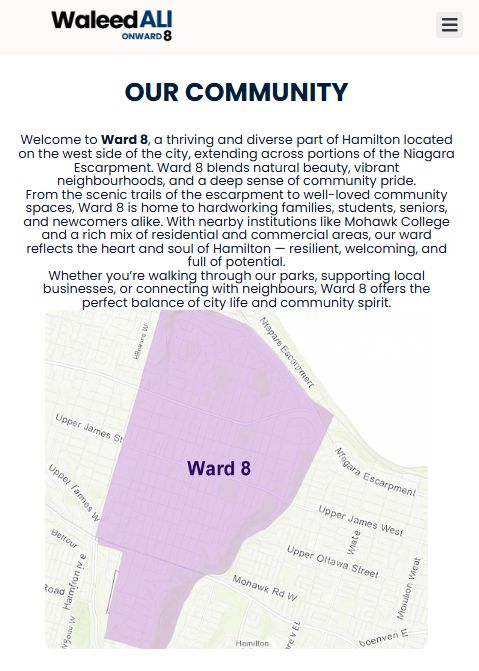
At the time of publication, the map has been replaced with an embed of the City of Hamilton’s Ward 8 mapping page.
Ali Does Not Answer If He Lives in Hamilton
Ali was asked if he lives in Hamilton: “You do not live in Ward 8. You have registered with a property address, not a home address. Do you live in Hamilton?”
In response, he wrote, “While I don’t currently reside in Ward 8, I have deep roots in that ward and a strong understanding of the issues affecting this community. What matters most to me and to many voters is not just where a candidate lives, but how committed they are to listening, showing up, and delivering results.”
Ali added, “I spend most of my waking day here traversing through the ward and have a clear understanding of the issues local residents, entrepreneurs are facing.”
He registered using the address of a property he owns in Ward 3. There is no residency requirement in municipal elections; property owners can run and vote in a municipality where they own land or property.
AI Hallucinations and Local Politics
The mistake inadvertently highlights the risks of relying on artificial intelligence tools without verifying outputs, and is a textbook example of what AI researchers call “hallucination” – when artificial intelligence systems confidently generate information that is factually incorrect.
AI hallucinations occur when machine learning models produce outputs that contain fabricated or incorrect information. They result from how these systems process and generate information. Large language models like ChatGPT are trained on vast datasets of text and images, learning statistical patterns rather than factual relationships.
When asked to generate a map, such as ‘create a map of ward 8 in hamilton,’ the system draws on visual patterns it has learned from countless maps.
When asked to ‘create a map of ward 8 in hamilton,’ ChatGPT’s interface prompted whether it should create a “colourful” political map. Regardless of the option selected, all maps output were inaccurate.
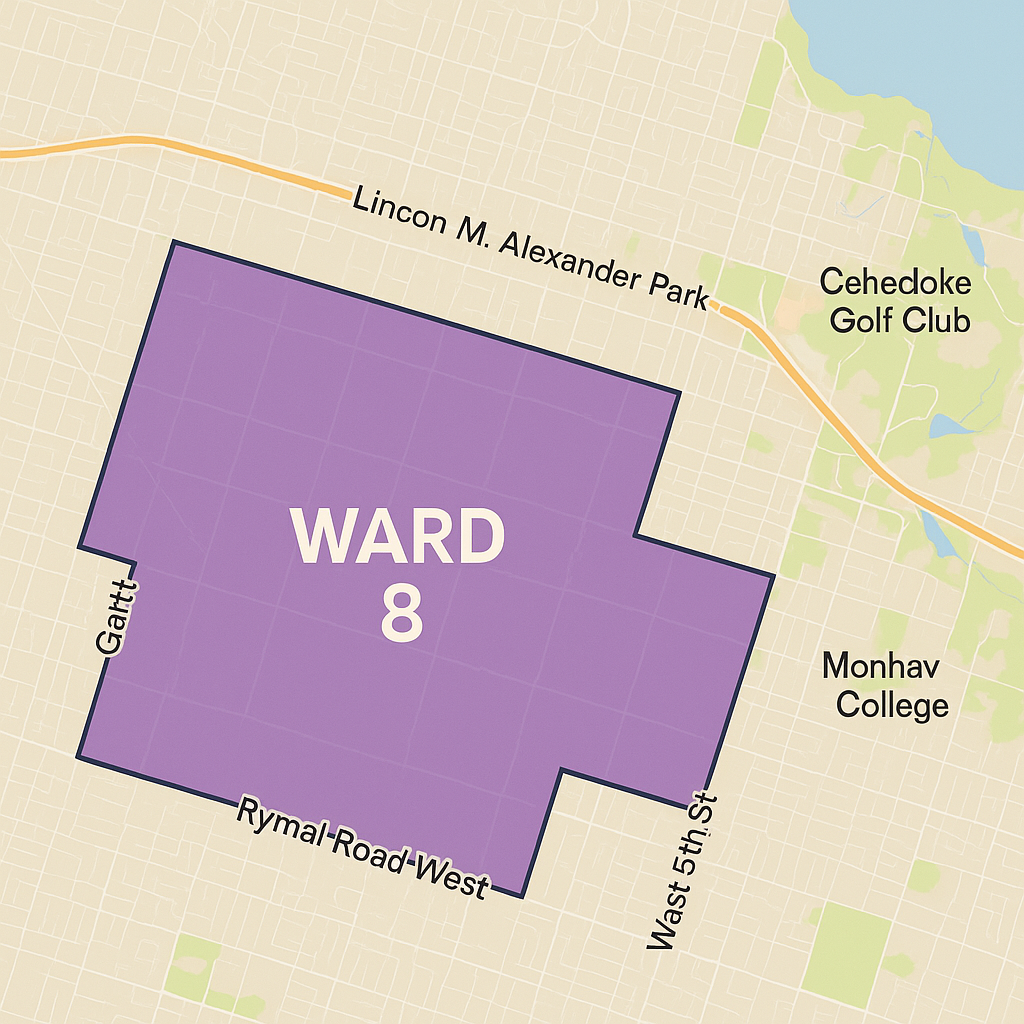
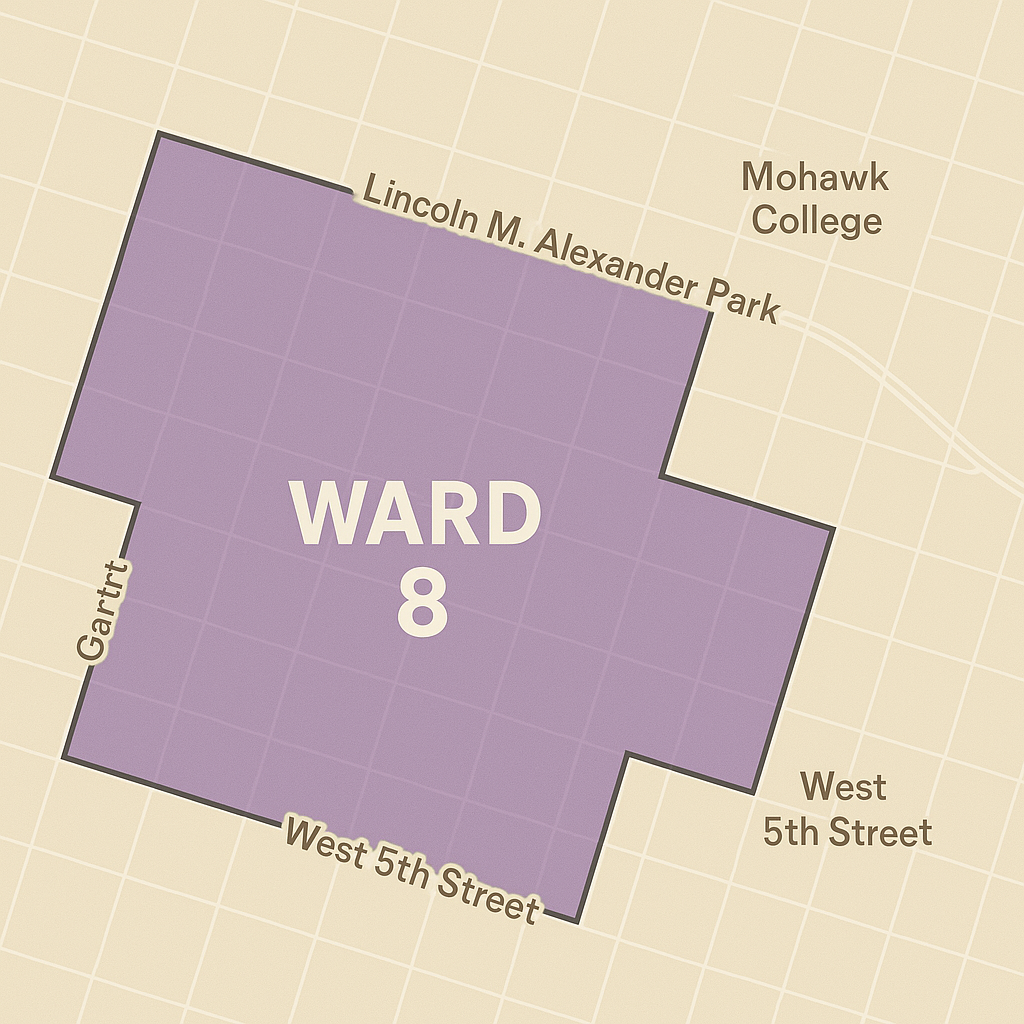
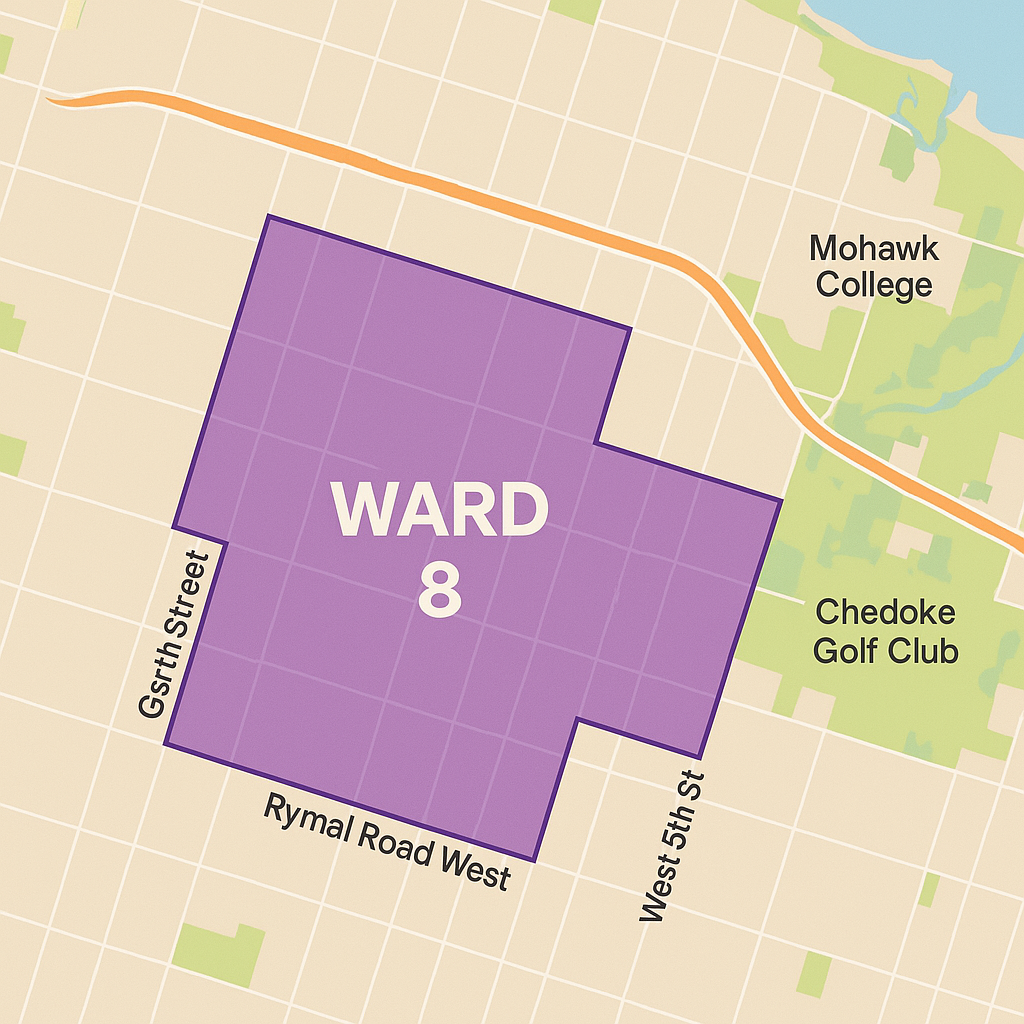
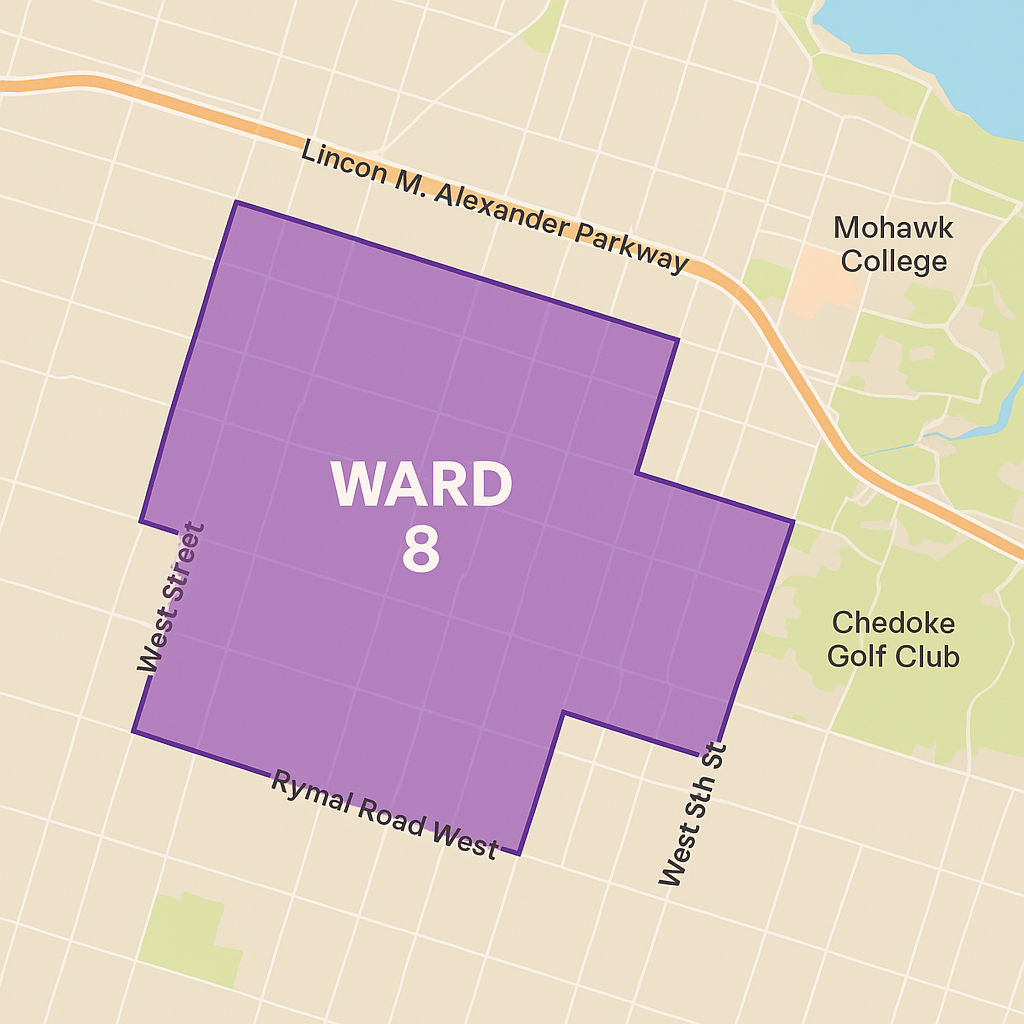
Finally, ChatGPT was provided an accurate Ward 8 map created by this author, told the above maps were inaccurate, and instructed to use the accurate map. ChatGPT continued to provide inaccurate maps, such as this:

It appears Ali’s campaign used the City’s ArcGIS Ward 8 profile page as inspiration for the incorrect map. His campaign map closely matches the City’s display style.
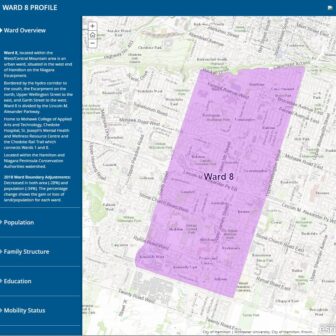
AI’s Sticky Memory Problem
Even after being corrected, ChatGPT continued to produce inaccurate maps due to AI’s tendency toward “sticky memory.” When users point out mistakes to AI chatbots, the chatbot may acknowledge the correction but the system will continue generating the same false information. This is because most AI models don’t learn from individual user corrections; instead, they maintain the same statistical patterns from their original training data.
Ali Focused on Meeting People at the Door, Appreciates Chance to Correct
Ali writes that he is working to meet as many Ward 8 residents as he can.
“I spend most of my waking day here traversing through the ward and have a clear understanding of the issues local residents, entrepreneurs are facing,” he writes.
On the AI map error, he writes, “Transparency and accuracy are priorities for me and my campaign team.”
Ali said his campaign “apologizes for the oversight and appreciates the chance to correct it.”
As of 10:00 a.m. this morning, there are six registered candidates: Rob Cooper, Sonia Brown, Anthony Frisina, Waleed Ali, Kevin Gonci, and Clifford Barry Quinn.
There are now six registered candidates: Rob Cooper, Sonia Brown, Anthony Frisina, Waleed Ali, Kevin Gonci, and Clifford Barry Quinn.
Cooper, Frisina, and Quinn live in Ward 8. Brown and Gonci registered with Ward 14 addresses. Ali (as noted above) did not answer where he resides.
Map Showing Wards 4 and 8
For reference, here is a map of Hamilton with Wards 4 and 8 highlighted.
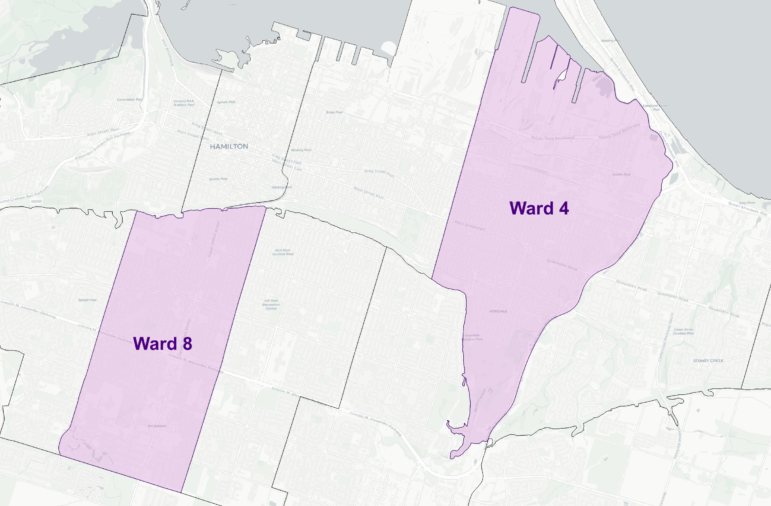
Made in QGIS using City of Hamilton open data. Credit: Joey Coleman
Production Details
v. 1.0.0
Published: June 30, 2025
Last updated: June 30, 2025
Author: Joey Coleman
Update Record
v. 1.0.0 original version

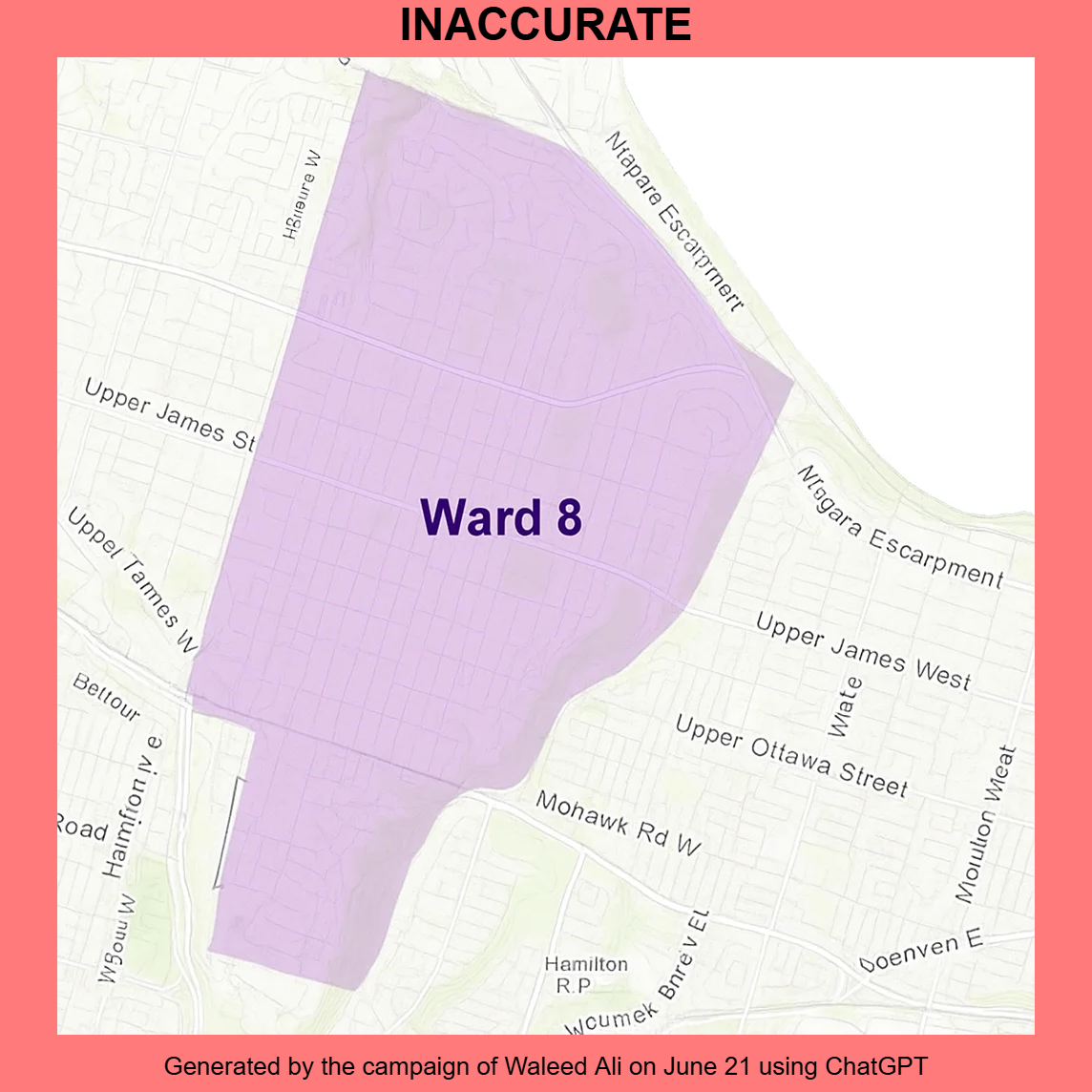
What are these AI sounding comments on this article? The guy is a hack who couldn’t consult very publicly available open data about the ward. If you’re too lazy to create an accurate map of the ward you’re running for then you don’t get the light of day from anyone with their head screwed on right. I don’t care if he apologized for it, he should’ve never did it in the first place. Instantly disqualifying behaviour in my eyes.
Wow, 24-year-old apologizing for a mistake so fast he has integrity
So what if he doesn’t live look like he has done more for Hamilton than anybody who lives there?
AI is not a bad thing if you correctly I think we all have to agree that would be the best thing in future
Dear Joey
With all du respect, Petty distractions won’t move us forward. Unlike many in politics, Waleed isn’t afraid to use every tool at his disposal—including AI—to lead more effectively. That’s not a weakness; it’s foresight. He learns, adapts, and improves in real time. His willingness to accept correction and grow isn’t just refreshing—it’s exactly the kind of accountable, modern leadership we need. If the loudest critique is a rehash of a closed chapter from his past, maybe that says more about his critics than it does about him.
And
Where Waleed resides isn’t the issue—what matters is that he met all the legal requirements to run, as confirmed by the City of Hamilton. He’s been accepted as a candidate in Ward 8, and that speaks for itself. Questioning his eligibility now feels more like a distraction than a genuine concern. If critics are focusing on this instead of engaging with his ideas or vision, maybe they’re running low on real arguments.
FYI it’s good that you are polishing him and also fyi I have used AI AS WELL